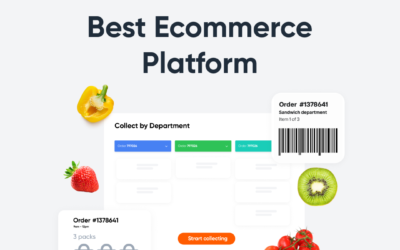
For a variety of reasons, eCommerce is quickly becoming critical to the prosperous future of retail. Online strategy is important for eCommerce businesses that want to get more customers, interact with new ones, and keep the ones they already have.
However, there are various eCommerce mistakes that firms can make if they are not cautious. Understandably, eCommerce can be intimidating, but recognizing these common eCommerce blunders will help you avoid pitfalls that have been seen in the industry time and again. As eCommerce continues to change the way we buy things now and will likely change the way we shop in the future, we must arm ourselves with the knowledge we need to succeed.
To avoid repeating what others have already learned the hard way, we’ve put together a list of the seven biggest eCommerce mistakes we’ve seen in the business. Let’s get started.
1. Unintuitive and not mobile-friendly website design
A poorly designed website or eCommerce platform is one of the biggest marketing mistakes to avoid. Spammy pop-ups, crammed menu listicles, mislabeled buttons, and products arranged in no particular order—these and other unattractive impressions can turn your website into a difficult experience for your visitors.
A mobile-friendly website is critically necessary for today’s environment. People are increasingly utilizing their smartphones and tablets to shop online, so if your site isn’t mobile-friendly, you’re going to lose a lot of business. Check that your website is responsive and easy to use on all devices.
2. Poor product images and descriptions
A quick check of the facts reveals that the majority of customers visit your website in order to gather information about the things you sell before clicking the button that initiates the purchase. It is important to create product descriptions that are both informative and helpful if you want to live up to their expectations.
Having mediocre photos of your products is another misstep that could cost you revenue. Your product photographs should be of good quality and an accurate representation of the item being sold so that consumers are aware of exactly what they are purchasing. Customers are more inclined to go elsewhere if the photographs you provide are grainy or misleading.
3. Missing product search and navigation options
When consumers are unable to locate the information they need, online retailers risk losing up to fifty percent of any possible sales. Therefore, half of the visitors who go to a website never make a purchase because they are unable to find what they are looking for.
Your website needs to include a product search and an easy-to-understand and intuitive navigation section, such as a search box that is easy to spot and prominently displayed. Using website tools that offer search query auto-complete is one way to improve the search functionality of your website. Checking to see if the internal search engine of the website host you’ve selected can recognize words even if they are spelled incorrectly or through the use of synonyms is another useful thing to do.
4. Having out-of-stock products on the platform
Nothing is more frustrating for a customer than trying to purchase a product only to find out that it’s out of stock. If you don’t have a product in stock, don’t list it on your website—it’s as simple as that. Customers will appreciate your honesty and are likely to come back in the future when the product is available again. This will ensure that your customers remain loyal and satisfied.
5. Lack of multiple payment options
Customers should be able to choose from a variety of payment options when they pay for something. Make sure your website accepts major credit cards and debit cards, as well as other payment methods (such as PayPal, Apple Pay, etc.). This will enhance their shopping experience and make them more likely to continue doing business with you in the future.
6. Not offering discounts, coupons, and other incentives
Many customers are more likely to purchase products if they are offered discounts or promotional offers (bonuses, coupons, loyalty programs, etc.). Offering incentives could not only help to increase sales but also customer retention. It is important to keep in mind that customers are always looking for a deal, and if you can give them one, they will be more likely to purchase something from your website.
7. Hidden fees and return policies
Don’t try to hide any fees or costs associated with purchasing your products. Customers should be aware of all the costs related to their purchase before they hit the buy button. Having hidden fees or not revealing your return policy can lead to customers leaving negative reviews and tarnishing your reputation. Be upfront about any and all fees associated with your products so there are no surprises at checkout. Make sure all fees and return policies are clearly stated so that your customers know what to expect when they buy from you.
Conclusion
By avoiding these seven common eCommerce mistakes, online retailers can ensure that their customers have a positive experience when shopping on their websites. It is important to provide customers with accurate product information, quality photos of the items for sale, multiple payment options, and other incentives to keep them coming back.
Make sure you are transparent about all costs associated with the purchase and provide clear return policies. Doing these things will not only help you to create a loyal customer base but also improve your reputation as an online store.
Local Express can always help you create and maintain a professional eCommerce website with the best user experience. Contact us today to get started.











